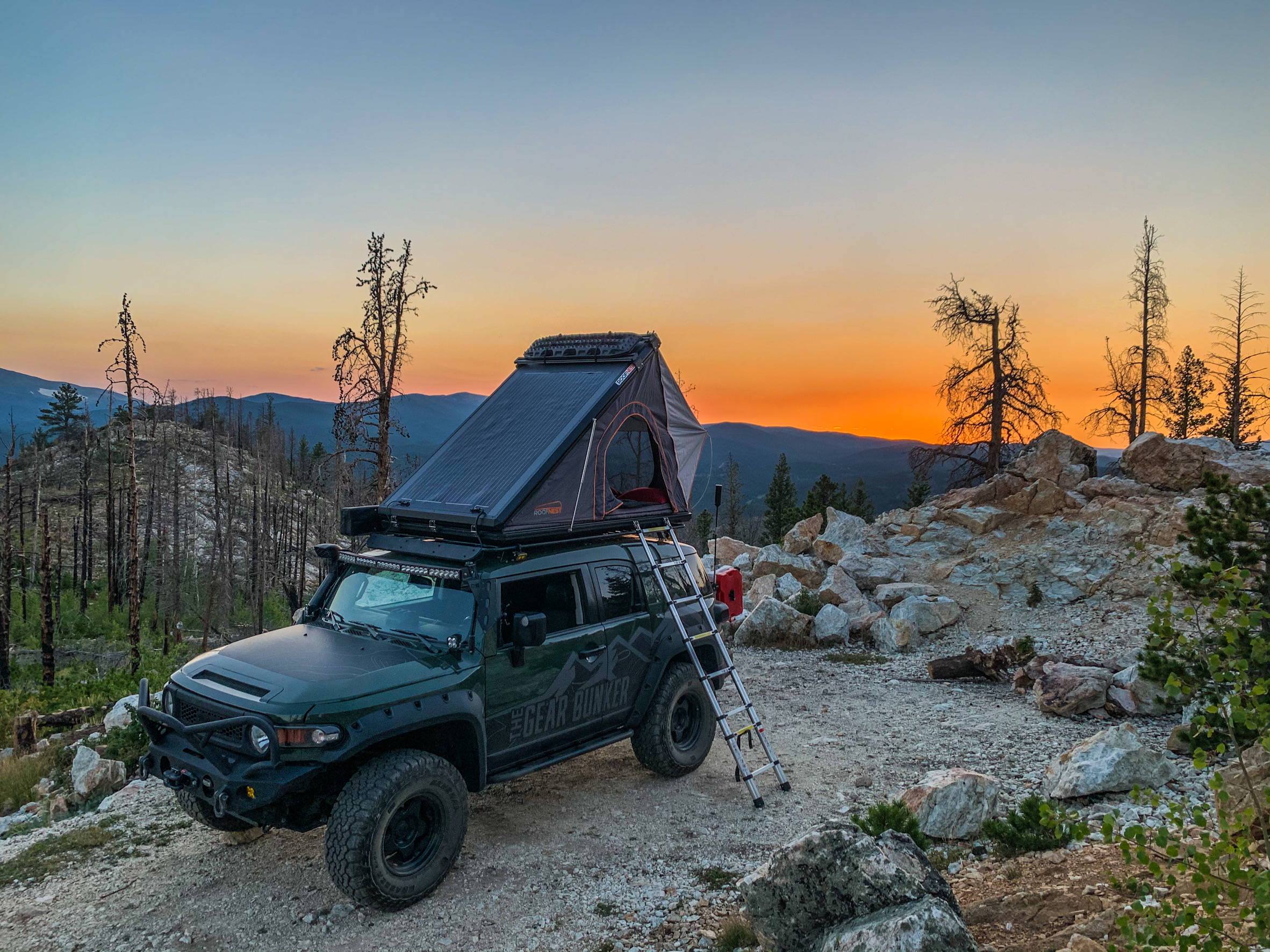
Adding a Sunflare 180w Solar panel & Odyssey Group 31 Battery to the FJ Cruiser
The electrical demand from a fully built Overland rig will typically surpass what the OEM battery and possibly the charging system can provide. That’s why I made some key changes to our 2011 FJ Cruiser. The addition of a larger battery and a Sunflare solar panel. The condition of the on-board Group 24 battery was declining so a new battery was first. I would have liked to put a dual battery set-up in the FJ similar to the one from Genesis Offroad that I installed in our Tundra. But the limited space in the engine compartment had me going a different direction. Fitting a larger capacity Group 31 AGM battery from Odyssey seemed to be the best bet. I went with the ODX-AGM31M which is a Marine battery with additional accessory terminals.
Sunflare 180W Solar Panel & Odyssey Battery Video:
Odyssey Group 31 AGM Battery
Although the Group 31 battery is dimensionally longer and bit taller, installation was pretty straight forward in the FJ. All I needed was a pair of longer battery hold downs. Available at the local auto-parts store for less than $10. The lager sized battery weighs 75lbs which is a 20lb increase over the OEM battery. But this also brings more overall performance. Like 1150 Cold Cranking Amps, up from 710CCA. And a 103Ah capacity, up from 90Ah. Plus an increase in reserve minutes from 165 to 220. All this equals more power. Power to safely run an array of additional electronic devices like auxiliary lights, Dometic fridge, Weboost and more.

Sunflare 180 Watt Flexible Solar Panel Kit
To keep the new battery in tip-top condition, I also opted for a solar option. Fortunately for me, I already had the perfect mounting solution. A hard shell aluminum roof top tent from Roofnest. The Falcon’s smooth flat topside is the perfect place to add adhere a flexible solar panel. A little research led me to the OK4WD website where I purchased a 180 watt Sunflare Solar Kit. This kit includes a thin flexible 180 watt panel, a Victron Smart Solar Charge Controller and the correct sized wire to connect the panel to the smart charge controller.

Easy Installation
Installation was pretty simple. When I inquired, OK4WD recommended using Sikaflex-221 multi-purpose sealant/adhesive to permanently mount the panel to the top of the Falcon. Using a caulk gun to apply the sealant, I followed up with a small notched trowel to evenly spread the sealant on the back of the panel. Having previously used painters tape to frame the final position of the solar panel atop to the Roofnest. My son and I carefully flipped the panel into position. Following up with a rubber rolling pin to make sure all of the sealant made contact with the roof top tent. Especially around the perimeter. I mounted the solar controller in the engine bay and ran the wires from the solar panel down the A-pillars to connect the two. From the controller, another pair of wires are routed to the battery terminals to charge the battery.

Sunflare 180W Technical Specifications:
- Maximum Power Point: Pmpp 180W
- Max Power Point Tolerance: ±5%
- Maximum Power Point Voltage: Vmpp 27.9V
- Max Power Point Current: Impp 6.2A
- Open Circuit Voltage: Voc 36.0V
- Short Circuit Voltage: Isc 7.4A
- Maximum Power Point Temp. Coeff.: 0.4%/C°
- MSRP: $749.00
How the Sunflare Solar Panel manages shade:
“Sunflare modules are more flexible than silicon-based solar panels. That makes their solar panels for truck roofs easier to install and eliminates the micro-cracking that silicon cells experience after the flexing of sport and recreational driving. Micro-cracking compromises the electrical integrity and reduces the power output of the panels over time. In addition, the Sunflare solar panels for truck roofs are better in partial shade. Each cell has a bypass diode so that only the shaded cell turns off. Other panels are set in strings so that if one cell in a string is shaded, the whole string goes out. Depending where the shade is hitting, the whole panel can be knocked out.” ~ok4wd.com

Final Thoughts:
This electrical upgrade affords pease-of-mind when traveling off the grid for a period of time. Minimizing the risk of ending up with a dead starter battery. Mounting the solar panel to the top of the RTT allows collection of free energy and its storage in a larger battery. Additionally, the Victron Smart Solar Charge Controller connects to my phone and provides the amount of solar energy collected, charge history and battery condition. This helps me position the vehicle when pulling into camp to maximize the solar energy available. Since the Roofnest Falcon is a clamshell design, I can angle the tent to collect maximum solar energy while the sun is low in the sky.

Stay tuned to The Gear Bunker and be a part of this all veteran-owned website. And be sure to subscribe to our Facebook, Instagram and YouTube channels. Sign up to be notified on YouTube ensuring you’ll know immediately when new content is uploaded.
Check out our new Affiliate Partner Page: https://www.thegearbunker.com/partners/
Visit our Amazon Storefront for more related items: www.amazon.com/shop/thegearbunker

Leave a Reply